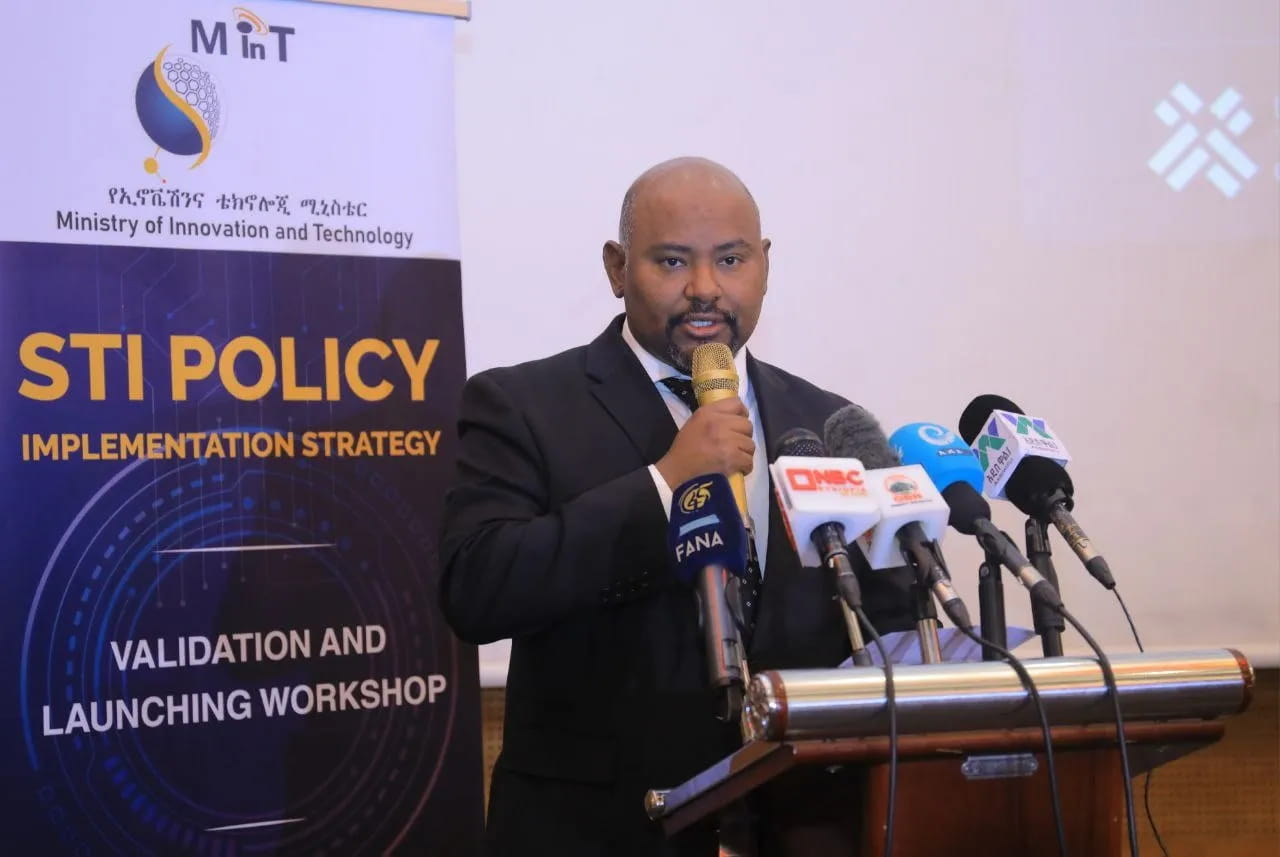Progress for 0 ad
Progress for 1 ad
Progress for 2 ad
Progress for 3 ad


A comprehensive Science, Innovation & Technology (STI) policy document spanning 13 years of implementation throughout Ethiopia has reached its final rounds of consultation. The draft document containing sixteen chapters was presented for feedback from industry stakeholders over the past week at the Hilton Addis Hotel. Backed by support from the International Trade Center’s Netherlands Trust Fund V (NTF V), the policy document looks to accelerate the realization of Sustainable Development Goals by leveraging STI.
Following a year of rigorous development under the guidance of international and local experts, it outlines eight strategic directions that include human resource development, building a research infrastructure, establishing standards for quality, and strong intellectual property frameworks.
Despite state-led progress in digitization of several government services, Ethiopia’s aggregate rank has fallen by five positions to 130th in the 2024 Global Innovation Index. The low-income country is also ranked last among 133 countries in terms of human capital and research, as well as market sophistication. Understandably, human resource development is the first goal of the draft policy document.
Belete Mola (PhD), Minister of Innovation & Technology (MiNT), stressed the importance of leveraging STI to bring about thorough improvement in the livelihood of Ethiopians during the validation workshop. He pinned the success of the country’s economic plans on close alignment between the government’s economic agenda and the accelerated expansion of STI.
“Our mission is clear,” Belete said.
The policy document poised for a three-phase implementation looks to establish a National Research Foundation in the near term, a national technology framework, and the integration of indigenous local knowledge.
However, the success of the ambitious strategy could be pinned on managing to bridge the financing shortfall for research, aligning the education curriculum with STI, and increasing participation of the private sector in research. Accessibility of information could also be a challenge, as just 0.22% of Official Development Assistance (ODA) flowing to Africa in 2022 is directed to data and statistics.
Chux Daniels (Prof), a research fellow in STI policy and one of the lead contributors to the document, has observed a similar challenge of inadequate resources and funding for research and development across Africa. He stressed the need to put more money into science while also working to improve the quality in a manner that addresses economic and social inequality.
“We need to use science and technology to address our challenges,” the professor told Shega.
He has noticed expectations for quick results and immediate output as one of the biases hindering funding for science and innovation. The University of Sussex alumnus identifies several pathways of exploration in STI that could yield significant benefits to Africans.
“African companies are importing solutions and services that can be developed locally,” he says.
Chux sees investments in research and scientific development yielding long-term gains that address problems of unemployment, FX pressures, and environmental pressures. Training to enhance capacity, strengthen the investor base, and expanded participation of the private sector will play a crucial role, according to the Professor.
👏
😂
❤️
😲
😠

Munir Shemsu
Munir S. Mohammed is a journalist, writer, and researcher based in Ethiopia. He has a background in Economics and his interest's span technology, education, finance, and capital markets. Munir is currently the Editor-in-Chief at Shega Media and a contributor to the Shega Insights team.
Your Email Address Will Not Be Published. Required Fields Are Marked *